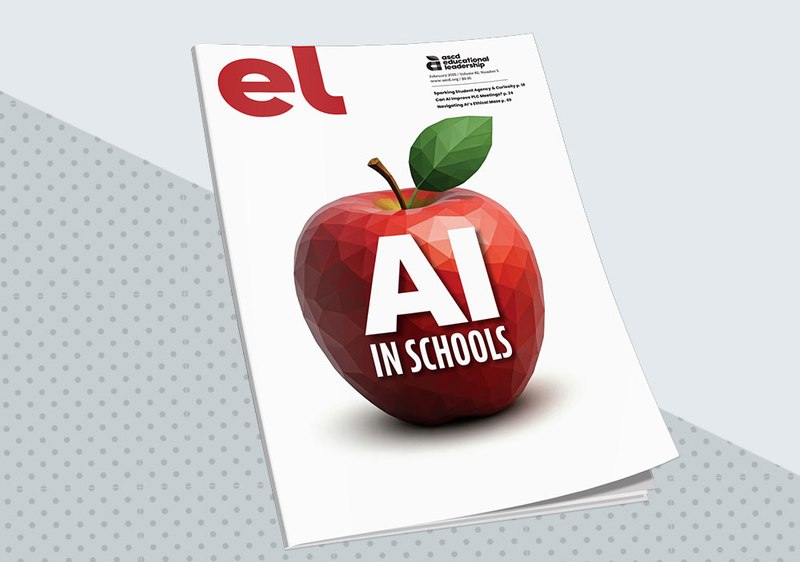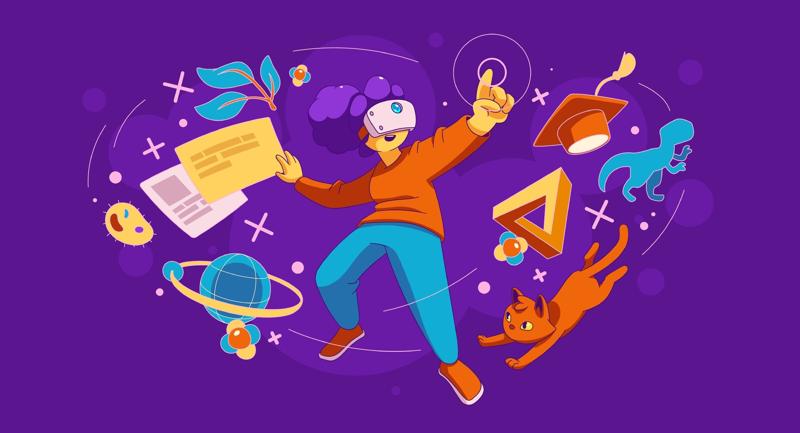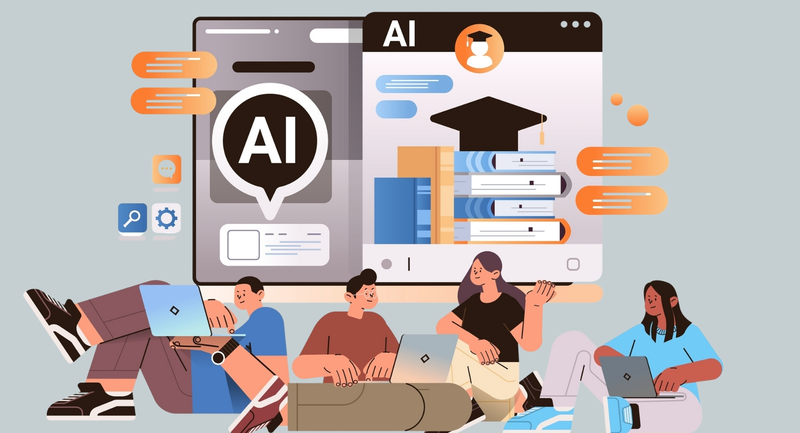When working with our youngest learners, every moment is a chance to press “start.” This is especially true in the world of artificial intelligence (AI) in education. So far, much of the focus on AI in education has been on middle school, high school, or college. It’s not surprising. Many AI tools are limited to users 13 years of age or older, and policies around AI use in schools are still taking shape. Without clear guidelines, early childhood and elementary educators may hesitate to explore these tools on their own or with students. At first glance, it may seem there’s no place for AI in early education. But quite the opposite is true.
A Start for Educators
Introducing AI tools and foundational concepts at an early age can enhance digital literacy, critical thinking, and problem-solving skills. AI plays a significant role in our society, and even young learners can benefit from a deeper understanding of how the technology works and best practices for use. A gradual, age-appropriate introduction to AI can better prepare students to engage with more complex concepts as they progress through school.
Given the growing popularity of AI, it’s important for educators to know different types of AI and machine learning systems currently supporting early childhood and elementary students such as:
- Speech recognition: Converts speech into text, helping with pronunciation practice and language development.
- Natural language processing (NLP): Allows for verbal interactions with programs, ranging from conversational bots to content generators.
- Adaptive learning systems: Personalizes learning pathways based on need and progress.
This isn’t an exhaustive list, but it shows that AI already exists in learning environments in various ways. Start by identifying the types of AI systems used in your classroom, school, or district. Understanding that AI is not so new can help alleviate some of the fears associated with implementation.
A gradual, age-appropriate introduction to AI can better prepare students to engage with more complex concepts as they progress through school.
A Question of Safety
In education, the safety of students is a primary concern in physical and digital spaces. This is especially true for our youngest learners. In the United States, most educators are familiar with the Family Educational Rights and Privacy Act (FERPA), which protects the privacy of student records and grants parents rights over their child’s education records. One quick safety reminder: when using generative AI tools, avoid including any personal identifiable information in your prompts. There are other federal protections to know:
- COPPA (Children’s Online Privacy Protection Act): Limits the collection of personal information from children under 13 years of age without parental consent.
- CIPA (Children’s Internet Protection Act): Requires schools and libraries to use internet filters and monitor online activity,
- PPRA (Protection of Pupil Rights Amendment): Grants parents the right to review surveys and instructional materials involving sensitive topics
In addition to federal protections, at least 26 states have guidance on AI in education. Many school districts have added local policies to further restrict access or use. These restrictions, while important, sometimes mean teachers and students miss out on opportunities to build foundational AI knowledge. Robust AI literacy programs leveled to support younger students and their teachers can go a long way toward introducing AI concepts while emphasizing safety.
Generating AI Capacity Without GenAI
There’s no escaping the number of generative AI tools available to educators and students. Since OpenAI released ChatGPT in November 2022, educators have been inundated with apps and tools marketed as time-savers, lesson plan builders, and digital teaching assistants. With proper adult supervision and within safe, school-approved platforms, students can use generative AI to explore ideas from companies that include SchoolAI and Magic School, create age-appropriate stories with programs such as Book Creator, and participate in guided learning activities with a tool like Curipod. Littlelit.ai is an example of an AI-powered platform designed specifically for younger students.
Despite this widespread availability of tools, early childhood and elementary educators are rightfully hesitant to introduce them to their students. While it’s easy to envision how generative AI might spark a young child’s imagination, there’s also a risk that overreliance can suppress creativity and critical thinking, diminish authentic expression, or expose children to inappropriate content without proper safeguards. Even if young learners may not be able to interact directly with generative AI, there are multiple ways to help them learn about it in safe, engaging learning environments.
Use hands-on activities that promote play, curiosity, and exploration while helping students build foundational AI literacy in safe, supportive ways.
The best way to begin learning about AI is through playful exploration. Hands-on approaches are better suited for young learners. ISTE offers “Hands-on AI Projects for the Classroom” that include activities such as creating chatbots and games. Here are some additional suggestions for building AI capacity for young learners:
- Pattern Recognition: Use storybooks, games, and unplugged activities to show how AI is programmed to learn from patterns and examples. One pattern recognition activity involves children becoming “pattern detectives” while they determine what color, shape, or image doesn’t fit with others. Educators can connect the activity to how machines can learn patterns.
- Classification: Use a collection of image cards with simple words. Children must decide how to sort the image cards into groups based on the patterns they notice. Not only does this activity support phonemic awareness, vocabulary, and decoding strategies, it also mimics how AI systems use classification to group data based on shared features.
- Algorithmic thinking: Use a stuffed animal or similar toy and visual direction cards (such as arrows) to “reach a goal” by providing simple instructions. For example, a child can hold the stuffed animal while following the instructions to walk from one area of a classroom to another. This type of activity shows children that AI and related systems need specific steps to complete a task.
- Prediction: During a read-aloud, pause and ask children what they think will happen next and why. After listening to their responses, continue reading so they can see if their predictions were correct. At the end of the story, explain that some AI systems also make predictions just like they did. Just as some of their guesses were off, AI systems can be wrong, too.
Start Small, Start Now
There is no one-size-fits-all path to introducing AI in early education, but there are small, meaningful steps you can take. It starts with understanding the types of AI-powered programs and tools you already use. Review safety and privacy guidelines, including school and district policies. Use hands-on activities that promote play, curiosity, and exploration while helping students build foundational AI literacy in safe, supportive ways. It’s okay to press start. The future is already moving forward in your classroom.
Copyright © 2025 Nneka McGee
AI in Schools
This innovation-focused issue of EL magazine showcases examples of how schools and educators are using AI to enhance instruction and transform the nature of their work—and student learning—for the better.









